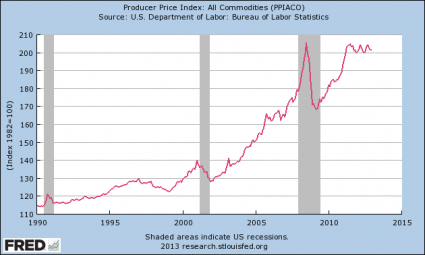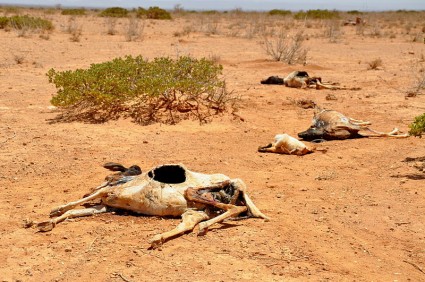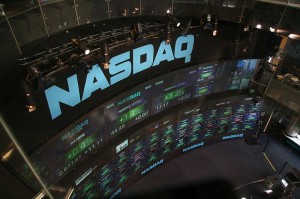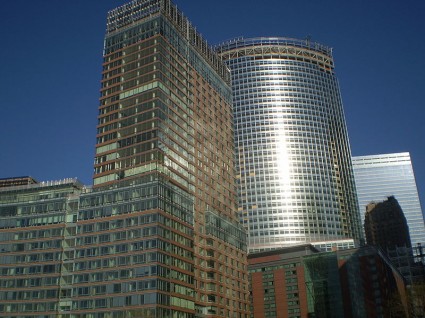 Corporate revenues in the United States have been falling for quite some time, but now some of the biggest companies in the entire nation are reporting extremely disappointing results. On Tuesday, Apple shocked the financial world by reporting that revenue for the first quarter had fallen 7.4 billion dollars compared to the same quarter last year. That is an astounding plunge, and it represents the very first year-over-year quarterly sales decline that Apple has experienced since 2003. Analysts were anticipating some sort of drop, but nothing like this. And of course last week we learned that Google and Microsoft also missed revenue and earnings projections for the first quarter of 2016. The economic crisis that began during the second half of 2015 is really starting to take hold, and even our largest tech companies are now feeling the pain.
Corporate revenues in the United States have been falling for quite some time, but now some of the biggest companies in the entire nation are reporting extremely disappointing results. On Tuesday, Apple shocked the financial world by reporting that revenue for the first quarter had fallen 7.4 billion dollars compared to the same quarter last year. That is an astounding plunge, and it represents the very first year-over-year quarterly sales decline that Apple has experienced since 2003. Analysts were anticipating some sort of drop, but nothing like this. And of course last week we learned that Google and Microsoft also missed revenue and earnings projections for the first quarter of 2016. The economic crisis that began during the second half of 2015 is really starting to take hold, and even our largest tech companies are now feeling the pain.
This wasn’t supposed to happen to Apple. No matter what else has been going on with the U.S. economy, Apple has always been unshakeable. Even during the last recession we never saw a year-over-year decline like this…
Apple today announced financial results for the second fiscal quarter (first calendar quarter) of 2016. For the quarter, Apple posted revenue of $50.6 billion and net quarterly profit of $10.5 billion, or $1.90 per diluted share, compared to revenue of $58 billion and net quarterly profit of $13.6 billion, or $2.33 per diluted share, in the year-ago quarter. As expected, the year-over-year decline in quarterly revenue was the first for Apple since 2003.
I think that this announcement by Apple is waking a lot of people up. The global economic slowdown is real, and we can see this in iPhone sales. During the first quarter, Apple sold 16 percent fewer iPhones than it did during the same quarter in 2015. This is the very first year-over-year quarterly sales decline for the iPhone ever. Here are some of the specific sales figures from the Apple announcement…
Apple sold 51.1 million iPhones during the quarter, down from 61.2 million a year earlier, while Mac sales were 4.03 million units, down from from 4.56 million units in the year-ago quarter. iPad sales were also down once again, falling to 10.25 million from 12.6 million.
Once these numbers hit the wires, shares of Apple immediately began to plummet during after-hours trading. In fact, USA Today is reporting that Apple has already lost 43 billion dollars in market value since the annoucement…
Shares of Apple are getting hit roughly 8% in after-hours trading, tumbling to $96.67. They closed in regular trading at $104.35, or down 0.7%, putting them down 0.9% for the year. The downward move in after-hours trading means the company shed $43 billion in market value based on after-hours trading.
Wow.
Meanwhile, shares of Twitter are crashing in after-hours trading after the social media giant also announced very disappointing results. The stock has now dripped below 16 dollars a share, and the company continues to lose tremendous amounts of money…
For all its other travails, Twitter is unprofitable. It narrowed its loss but still recorded a loss of $79.7 million, or 12 cents a share, compared with a loss of $162.4 million, or 25 cents a share, in the year-ago quarter.
Of course it isn’t just the tech giants that are troubled these days.
On Tuesday we learned that same-store sales for Chipotle declined by a whopping 29.7 percent during the first quarter, and appliance manufacturer Whirlpool has seen sales fall all over the planet…
Whirlpool, the world’s biggest appliance manufacturer, has become the poster child for the deep challenges facing multinational companies these days.
– Latin American sales plunged 22%.
– Revenue fell 8% in Europe, Middle East and Africa.
– Asia sales dipped 2%.
When is it finally going to sink in for most people? The global economy is slowing down significantly, and the next global economic crisis is already here.
Of course the oil companies are feeling more pain than anyone else. According to CNN, the crash in the price of oil has cost the 40 largest publicly-traded U.S. oil producers 67 billion dollars…
American oil companies are drowning in a sea of red ink.
The crash in crude oil prices caused a stunning $67 billion in combined losses by 40 publicly-traded U.S. oil producers last year, according Energy Information Administration research. And the bleeding is expected to continue at least early this year for many.
The losses surpassed $1 billion each from struggling oil companies like EOG Resources (EOG), Devon Energy (DVN) and Linn Energy (LINE) as well as SandRidge Energy (SD), the shale oil driller that recently admitted it’s exploring a bankruptcy filing.
That is an astounding amount of money.
These days we throw around terms like “millions” and “billions” so much that they almost lose their meaning.
But this is real money that we are talking about here.
In recent days, Barack Obama has been running around boasting that he saved the world economy from another Great Depression. But that isn’t true at all. Instead, our “leaders” have simply set the stage for a larger and more painful crisis. I like the way that Doug Casey recently put it…





